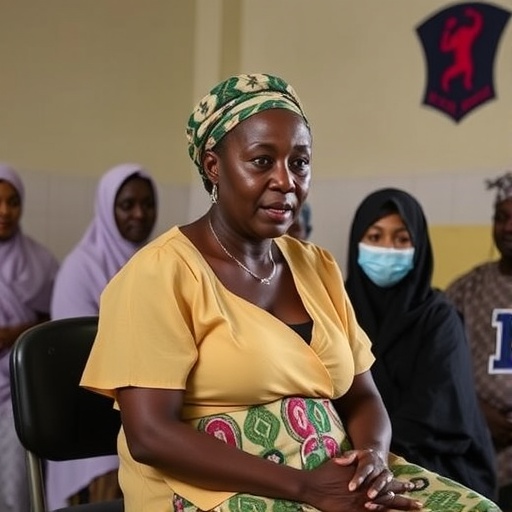Transgender pool player loses discrimination claim after being barred from women’s tournaments – The Independent

Report on Legal Ruling Regarding Transgender Athlete Participation and its Intersection with Sustainable Development Goals
Case Summary: Haynes v. English Blackball Pool Federation (EBPF)
A legal challenge concerning athlete eligibility and discrimination has concluded, providing a significant ruling on the participation of transgender women in female-only sports categories. The case has profound implications for the implementation of several Sustainable Development Goals (SDGs), particularly those concerning equality and justice.
- Claimant: Harriet Haynes, a professional transgender pool player.
- Defendant: The English Blackball Pool Federation (EBPF), a sports organizing body.
- Core Issue: Ms. Haynes filed a discrimination claim against the EBPF following its August 2023 policy change, which restricted participation in ladies’ events to individuals assigned female at birth.
- Claimant’s Argument: The policy constituted direct discrimination on the grounds of gender reassignment, violating the Equality Act 2010 and the European Convention on Human Rights (ECHR), specifically Article 8 regarding the right to private life.
- Defendant’s Argument: The EBPF contended the policy was necessary to ensure “equality and fairness for all” in a “gender-affected activity,” and that it did not discriminate based on gender reassignment, as the exclusion was based on being born male.
- Judgment: The court dismissed the claim, concluding that pool is a “gender-affected activity” and that the exclusion of individuals not born female was a reasonable and necessary measure to “secure fair competition.”
Analysis of the Judgment in the Context of Sustainable Development Goals (SDGs)
The court’s decision intersects critically with the global agenda for sustainable development, highlighting complex challenges in achieving key goals.
SDG 5: Gender Equality
This case presents a direct conflict between different interpretations of achieving gender equality. SDG 5 aims to end all forms of discrimination against all women and girls everywhere and ensure their full and effective participation in public life.
- Inclusion vs. Fair Competition: The ruling prioritizes the objective of fair competition for athletes born female over the objective of full inclusion for transgender women. This underscores the complexities in applying SDG 5 within competitive sports, where biological attributes are considered relevant.
- Defining “Woman” in Policy: The court’s reliance on a biological definition of a woman for the purposes of sport sets a precedent that impacts how gender equality policies are formulated and implemented, potentially excluding transgender women from protected categories in specific contexts.
SDG 10: Reduced Inequalities
SDG 10 calls for the reduction of inequality within and among countries by empowering and promoting the social, economic, and political inclusion of all, irrespective of age, sex, disability, race, ethnicity, origin, religion, or other status.
- Impact on a Marginalized Group: The judgment is perceived by advocates as reinforcing systemic inequalities faced by the transgender community. By legally sanctioning exclusion from a social activity aligned with their gender identity, the ruling may contribute to the marginalization targeted by SDG 10.
- Access to Participation: The decision limits the ability of a specific group—transgender women—to participate fully in their chosen sport, directly challenging the SDG 10 target of promoting inclusion.
SDG 16: Peace, Justice and Strong Institutions
This goal focuses on building effective, accountable, and inclusive institutions at all levels and ensuring access to justice for all. The case is a clear example of citizens using legal institutions to seek justice and clarify rights.
- Role of Judicial Institutions: The court system acted as the arbiter in a contentious social and legal dispute, demonstrating the function of strong institutions in interpreting legislation like the Equality Act.
- Influence of Legal Precedent: The judgment was heavily influenced by a recent Supreme Court decision, illustrating how judicial precedent shapes the institutional framework for rights and protections. This reliance on established legal interpretation is a hallmark of a functioning justice system under SDG 16.
- Access to Justice: While the claim was dismissed, the case itself and the possibility of an appeal represent the process of accessing justice. The claimant’s representatives noted that the judge’s findings on proportionality, had the Supreme Court precedent not been binding, would have favored their client, indicating the nuanced and evolving nature of legal interpretation.
Broader Implications and Precedent
The ruling has set a significant precedent with wider implications for sports governance and equality law.
- Legal Definition in Sports: It is the first known ruling to apply the Supreme Court’s interpretation of “woman” as biologically female within a sporting context, solidifying this definition for “gender-affected activities.”
- Influence on Other Sports Bodies: The decision aligns with and may embolden similar policies by other governing bodies, such as the Football Association’s recent ban on transgender women in female football.
- Ongoing Legal Challenge: The claimant’s consideration of an appeal signifies that the legal and ethical debate is far from settled. The focus of a potential appeal would likely be on whether the exclusion was a “proportionate means of achieving a legitimate aim,” a key test under the Equality Act 2010.
SDGs Addressed in the Article
SDG 5: Gender Equality
- The article directly engages with issues of gender equality by focusing on a legal dispute over the definition of “woman” in the context of sports. It highlights the conflict between the rights of a transgender woman, Harriet Haynes, and the rules of a sports federation aiming to ensure “fair competition” in its ladies’ events. The case revolves around discrimination based on gender reassignment, which is a core component of achieving gender equality for all.
SDG 10: Reduced Inequalities
- The article addresses the theme of reducing inequalities by examining the social inclusion of a transgender person. The decision by the English Blackball Pool Federation (EBPF) to exclude players not assigned female at birth from women’s competitions is a direct example of a policy that affects the inclusion of a specific group. The legal claim by Ms. Haynes is an attempt to challenge this inequality and advocate for equal opportunity, as she stated, “All I’ve ever wanted is to be able to play like any other woman.”
SDG 16: Peace, Justice and Strong Institutions
- This goal is relevant as the article details a legal process concerning justice and the role of institutions. Harriet Haynes sought recourse through the judicial system (“took the EBPF to court”) to challenge a policy she deemed discriminatory. The article discusses the court’s judgment, the influence of a Supreme Court ruling, the application of the Equality Act and the European Convention on Human Rights (ECHR), and the potential for an appeal. This highlights the function of legal institutions in interpreting laws and resolving disputes related to rights and non-discrimination.
Specific Targets Identified
SDG 5: Gender Equality
-
Target 5.1: End all forms of discrimination against all women and girls everywhere.
- The article centers on Ms. Haynes’s claim of “direct discrimination” on the grounds of her gender reassignment. Her exclusion from the women’s team and competitions is presented as a form of discrimination that prevents her from participating as a woman in her sport.
-
Target 5.c: Adopt and strengthen sound policies and enforceable legislation for the promotion of gender equality.
- The case examines the policies of a sporting body (the EBPF) and how they align with national legislation like the Equality Act. The court’s decision, influenced by a Supreme Court ruling, represents an interpretation and enforcement of legislation concerning gender and sport, directly impacting policies for gender equality.
SDG 10: Reduced Inequalities
-
Target 10.2: Empower and promote the social, economic and political inclusion of all, irrespective of…sex…or other status.
- The article discusses the exclusion of a transgender woman from a social activity (competitive pool). The EBPF’s policy directly impacts the social inclusion of transgender athletes, which Ms. Haynes challenged in court.
-
Target 10.3: Ensure equal opportunity and reduce inequalities of outcome, including by eliminating discriminatory laws, policies and practices.
- The entire legal battle is a manifestation of this target. Ms. Haynes is fighting a policy she considers discriminatory to ensure she has an equal opportunity to compete. The EBPF, conversely, argues its policy is necessary to ensure “fair competition” and “equality” for biologically female players.
SDG 16: Peace, Justice and Strong Institutions
-
Target 16.3: Promote the rule of law…and ensure equal access to justice for all.
- The article demonstrates this target in action. Ms. Haynes exercised her right to access the justice system to have her claim of discrimination heard by a court. The detailed account of the judgment and legal reasoning shows the rule of law being applied to a specific case.
-
Target 16.b: Promote and enforce non-discriminatory laws and policies for sustainable development.
- The case is a test of how non-discriminatory laws, specifically the Equality Act, are enforced. The court’s decision to dismiss the claim based on a higher court’s ruling on the definition of “woman” is a direct example of the enforcement and interpretation of these laws and policies.
Indicators for Measuring Progress
Implied Indicators from the Article
- Existence of legal frameworks protecting against discrimination: The article explicitly mentions the Equality Act 2010 and the European Convention on Human Rights (ECHR) as legal frameworks under which the claim was made. The use of these laws in a court case is an indicator of their existence and application.
- Number of legal challenges to discriminatory policies: The court case brought by Harriet Haynes against the EBPF serves as a qualitative indicator. Tracking the frequency and nature of such cases can measure progress towards challenging perceived discrimination.
- Policies of sporting bodies regarding inclusion: The article points to the policies of the EBPF and the Football Association as concrete examples. These policies, which ban transgender women from female competitions, are measurable indicators of the state of inclusion within these institutions.
- Judicial rulings that interpret and define rights: The judgment in this case, and particularly its reliance on the “Supreme Court decision” that established a legal definition of a woman as biologically female, is a key indicator. Such landmark rulings shape the legal landscape for equality and non-discrimination.
Summary Table of SDGs, Targets, and Indicators
| SDGs | Targets | Indicators Identified in the Article |
|---|---|---|
| SDG 5: Gender Equality | Target 5.1: End all forms of discrimination against all women and girls everywhere. | Filing of legal claims based on gender reassignment discrimination (e.g., Harriet Haynes’s claim). |
| SDG 10: Reduced Inequalities | Target 10.3: Ensure equal opportunity and reduce inequalities of outcome, including by eliminating discriminatory…policies. | Existence of policies by sporting bodies (EBPF, Football Association) that exclude certain groups from participation. |
| SDG 16: Peace, Justice and Strong Institutions | Target 16.3: Promote the rule of law…and ensure equal access to justice for all. | An individual’s use of the court system to challenge a policy (e.g., “Harriet Haynes took the English Blackball Pool Federation (EBPF) to court”). |
| SDG 16: Peace, Justice and Strong Institutions | Target 16.b: Promote and enforce non-discriminatory laws and policies. | Application and judicial interpretation of national laws (the Equality Act) and Supreme Court rulings in specific discrimination cases. |
Source: independent.co.uk

What is Your Reaction?
 Like
0
Like
0
 Dislike
0
Dislike
0
 Love
0
Love
0
 Funny
0
Funny
0
 Angry
0
Angry
0
 Sad
0
Sad
0
 Wow
0
Wow
0



























;Resize=805#)










































![[COPY] Women Are Quitting. WTF Is Happening? – Substack](https://substackcdn.com/image/fetch/$s_!XkPN!,w_424,c_limit,f_auto,q_auto:good,fl_progressive:steep/https://substack-post-media.s3.amazonaws.com/public/images/16c48462-ec27-40d9-8bd9-bf8a0efa0cc0_756x836.png?#)








